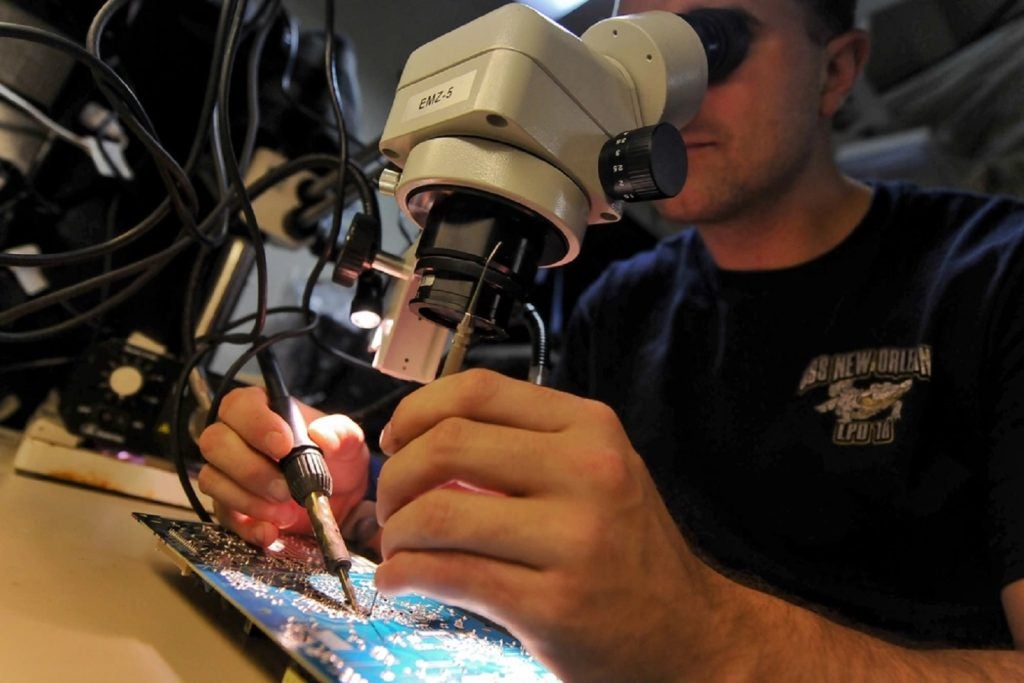Lockheed Martin will collaborate with the American semiconductor manufacturer, GlobalFoundaries (GF), to strengthen the “security, reliability and resiliency” of US domestic supply chains for microchip technologies.
Semiconductor microchips have become an essential part of the global economy. Not only is this technology the subject of a trade war, but they are found in thousands of electronic products and are important components in emerging technologies, such as artificial intelligence.
This collaboration directly supports the objectives in the Biden administration’s CHIPS and Science Act, which seeks to increase the traceability, provenance and domestic production of semiconductor technologies.
The announcement was made today at GF’s advanced manufacturing facility in upstate New York with US Senate Majority Leader Charles Schumer, Lockheed Martin Chairman, President and CEO Jim Taiclet and GF President and CEO Dr. Thomas Caulfield.
GF’s technology
The companies will leverage GF’s technology to increase anti-fragility in microelectronics systems and supply chains.
The collaboration will explore critical needs in semiconductor innovation and secure manufacturing across a range of advanced and next-generation chip technologies, including 3D heterogeneous integration for optimised chip packaging that improves performance; silicon photonics for low-power and high-speed data transport; and gallium nitride on silicon to help chips work at higher temperatures.
The companies will also work to develop a chiplet ecosystem to produce chips more rapidly and affordably.
“I wrote my CHIPS and Science Act to spark partnerships like this that will secure our domestic supply chains and lead to job growth and investment in places like upstate New York.
“Now, more than ever, we need to secure our supply chains and make sure the chips that our military relies on are built in [the United States], not overseas,” Schumer emphasised.
A domestic microchip ecosystem
In 2021, the macroeconomic analysis company, TS Lombard, now a GlobalData subsidiary, suggested that “the structural shift in demand for semiconductors moves from the focus of global geopolitics and finance from the Persian Gulf to the South China Sea,” as the coveted technology is prized as “the new oil.”
As “chips are in the vortex of the US/China rivalry,” cultivating a domestic industrial base for semiconductors will enable the US to maintain its competitive advantage against the pacing threat of China.









